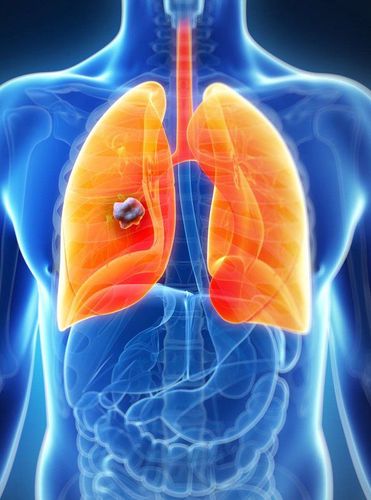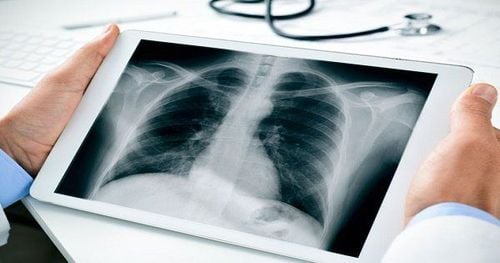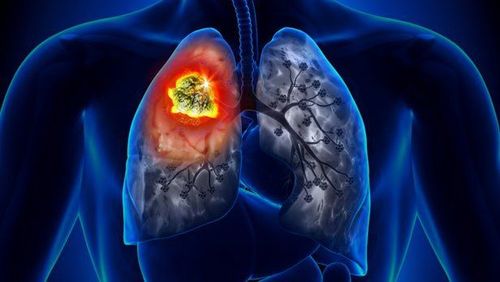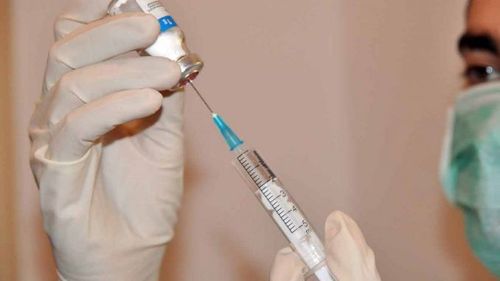This is an automatically translated article.
The article is professionally consulted by doctors working at Oncology Center - Vinmec Central Park International General HospitalAbout one-third of lung cancer patients are diagnosed with localized disease that can be treated with surgical resection. If the patient is not a candidate for surgical resection (due to old age, medical comorbidities or the patient refuses surgery) it is completely possible to treat with radical radiotherapy.
One third of patients with disease has spread to the lymph nodes. In these cases, radiation therapy combined with chemotherapy and sometimes surgery is used. A final third of patients may have tumors that have spread to other parts of the body through the bloodstream and are often treated with chemotherapy, targeted therapy or immunotherapy and sometimes with radiation therapy to relieve symptoms.
1. Surgery to remove the entire lobe of the lung
Total lobectomy, which includes the tumor, is the mainstay of treatment for patients with early-stage cancer who are in good general health. The goal of surgery is to completely remove all tumor cells. Unfortunately, lung cancer tends to develop in smokers over the age of 50, who very often have other lung disease or serious medical conditions that increase the risk of surgery.The location and size of a lung tumor dictate how extensive the surgery must be. Open thoracotomy or less invasive thoracotomy, using smaller incisions, may be recommended for suitably selected patients.
2. Lob cut
A total lobectomy is an accepted procedure to remove lung cancer when the lungs are functioning well. The risk of death is 3% to 4% and tends to be highest in older patients. If poor lung function prevents lobectomy, a small cancer confined to a limited area can be removed with a small portion of surrounding lung tissue. This is called a partial resection and can be a wedge resection or a lobectomy.With more limited surgery than lobectomy there is a higher chance of recurrence. Lobar resection causes little loss of lung function, as a smaller portion of the lung is removed, and has a surgical mortality risk of 1.4%. If the entire lung has to be removed by pneumonectomy, the expected mortality is 5-8%. The oldest patients are at greatest risk, and cancer recurrence is very common. In the majority of cases, the patient is not suitable for surgery or cannot remove the entire tumor because of its size or location.
3. Radiation therapy
Using high-energy radiation can kill rapidly dividing cancer cells. There are many uses of radiation therapy in the treatment of lung cancer: As primary and radical treatment. Before surgery to shrink the tumor. After surgery to remove any cancer cells that are still left in the treated area. To treat lung cancer that has spread to the brain or other areas of the bodyBesides attacking the tumor, radiation therapy can help relieve some of the symptoms the tumor causes, such as difficulty breathing. When used as an initial treatment instead of surgery, radiation therapy can be used alone or in combination with chemotherapy. Today, many patients with small lung cancer, but who are not candidates for surgery, are being treated with a radiation technique called body-positioned radiation therapy (SBRT).
In more locally advanced cases, radiation therapy is performed using an external beam technique, aimed at directing the beam to the tumor. Treatment is divided into a series of consecutive days, usually 5 days a week, often referred to as dosing, lasting more than six to seven weeks for conventional treatments.
Currently, Vinmec International General Hospital has the most modern Radiotherapy Planning System and Truebeam Machine in Southeast Asia, with the outstanding advantage of minimizing the effects of radiation on benign tissues compared to radiation. X, reducing the irradiation time and the risk of side effects for the patient.) helps effectively treat common cancers: Lungs, Head and neck, breast....

Dùng bức xạ năng lượng cao có thể tiêu diệt các tế bào ung thư đang phân chia nhanh chóng
4. Chemotherapy
Chemotherapy involves drugs that are toxic to cancer cells. The drugs are usually given by injection directly into a vein or through a catheter placed in a large vein. Often used as adjuvant therapy after surgery to eliminate residual metastases, chemotherapy can also slow tumor growth and relieve symptoms in inoperable patients.Some chemotherapy drugs in cancer treatment increase damage to the tumor by combining with radiation therapy of cancer cells. These chemotherapy drugs help keep tumor cells at the stage when they are most sensitive to radiation, or reduce the ability of cancer cells to repair themselves after a course of radiation therapy. Evidence suggests that the combination of these drugs combined with radiation therapy is more effective than radiation therapy alone, but carries a significant risk of side effects.
5. Newer biological agents, such as targeted therapy or immunotherapy.
These new drugs may have fewer side effects than traditional chemotherapy and in some cases may be more effective. This treatment is used in all stages of lung cancer, especially the metastatic stage and can prolong life even in the elderly as long as they are in good health. Currently, these therapies are being gradually researched and applied in practice, so more time and data are needed to make a comprehensive assessment of the effectiveness of maintaining a stable response. and longevity of the drug.Central Park International General Hospital is the first hospital in Ho Chi Minh City to apply autologous immunotherapy. Vinmec Central Park Hospital can treat lung cancer with multimodal cancer treatment protocols tailored to each case, bringing high treatment efficiency, providing an additional address for cancer examination and treatment. reliable for people in Ho Chi Minh City and surrounding areas, so that people do not have to go abroad for treatment.
6. Is treatment for inoperable lung cancer effective?

Đây là việc sử dụng thuốc, hóa trị, xạ trị hoặc các biện pháp khác để làm giảm các triệu chứng ung thư phổi
When curative treatment is not a primary goal in distant metastases, palliative treatment is often recommended. This is the use of drugs, chemotherapy, radiation, or other measures to relieve lung cancer symptoms without actually removing the tumor. Smaller doses of radiation therapy are used to avoid side effects. At some point, if you and your oncologist or primary care physician agree that aggressive treatment is no longer recommended, palliative care can provide comfort and support. Pain relief is a very important part of lung cancer treatment. Despite many effective treatments and devices to deliver drugs on demand without overdosing, many cancer patients still do not receive adequate pain relief. If the patient's needs are clearly expressed, the treating physician can provide more appropriate care.
7. Prevention and early detection of lung cancer
Prevention is the best way to reduce lung cancer mortality. More than 90% of patients with lung cancer will not develop the disease if they do not smoke. Every patient who smokes should be informed of the enormous risks. Trials of vitamin A and beta-carotene supplements have failed to demonstrate a benefit.Regular lung cancer screening is offered to people considered to be at high risk for the disease. Lung cancer early detection methods such as sputum testing, chest x-rays, and computed tomography (CT) scans have been used to see if these tests make a difference to the number of people being tested compared with the number of people being tested. with the number of people who did not participate in the test.
The results show that X-ray screening or sputum testing is not effective because it does not reduce lung cancer deaths. In contrast, lung cancer screening with low-dose chest CT has been shown to reduce lung cancer incidence, and low-dose chest CT has been approved by the US Food and Drugs Administration (FDA) to screen for lung cancer. lung cancer control.

Hơn 90% bệnh nhân bị ung thư phổi sẽ không phát triển bệnh nếu họ không hút thuốc
8. Who should be screened for lung cancer?
In short, a person with one of the following is a candidate for lung cancer screening: 55 to 77 years old; current smokers or people who quit smoking less than 15 years ago; have a smoking history of at least 30 years (the term pack/year is a way of determining how many cigarettes a person has smoked in his or her lifetime. One pack is equivalent to smoking 20 cigarettes; No symptoms. may be related to lung cancer; Be healthy enough to tolerate early stage lung cancer treatment; No chest CT scan in the past 12 monthsCurrently at Vinmec international general hospitals. There is a Lung Cancer Screening Package with many outstanding advantages such as: A team of highly qualified and experienced doctors; Having a full range of professional facilities to diagnose the disease and stage it before treatment: Internal medicine. endoscopy, CT scan, PET-CT scan, MRI, histopathological diagnosis, gene - cell testing... There are full range of main treatment methods for cancer: surgery, radiation therapy, chemotherapy, etc. stem cell transplant... Help customers detect disease at an early stage for timely treatment.
Please dial HOTLINE for more information or register for an appointment HERE. Download MyVinmec app to make appointments faster and to manage your bookings easily.
According to Saigon Investment.












